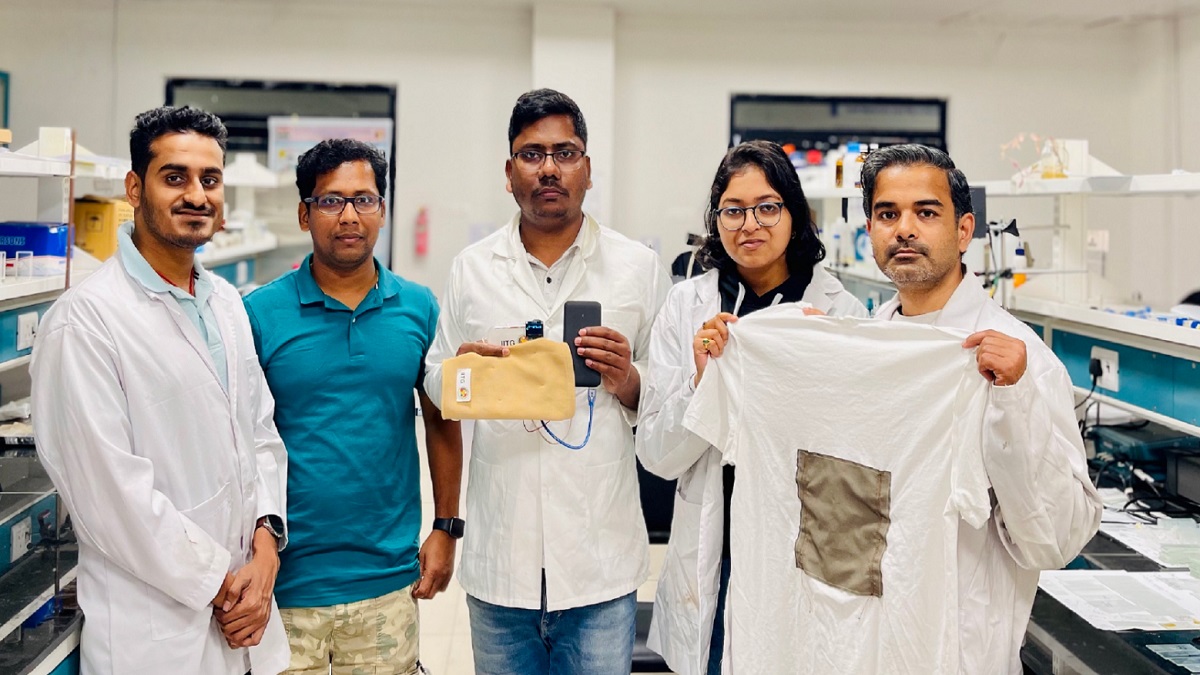IIT Guwahati Engineers Next-Gen Heated Fabric: Flexible, Self-Cleaning & Efficient
IIT Guwahati has developed an innovative self-cleaning, flexible heating fabric designed to provide warmth in extreme cold climates.
Researchers at the Indian Institute of Technology (IIT) Guwahati have developed a water-repellent, conductive textile that generates heat by converting electricity and sunlight. Designed to protect wearers in extreme cold, this innovation helps mitigate serious health risks such as arterial blood clotting, breathing difficulties, and weakened immunity caused by prolonged exposure to low temperatures. The study, published in Nano-Micro-Small, was co-authored by Prof. Uttam Manna from the Department of Chemistry, along with his research team: Debasmita Sarkar, Haydar Ali, Rajan Singh, Anirban Phukan, Chittaranjan Mishra and Prof. Roy P. Paily from the Department of Electronics and Electrical Engineering.
IIT Guwahati's Flexible Heating Fabric
Extreme cold can pose severe health risks, including fatal complications, with studies showing that cold-related deaths surpass those caused by extreme heat. While traditional solutions like heaters and layered clothing provide protection, they are often bulky or dependent on a continuous power supply. Conductive textiles present a lightweight and flexible alternative, but existing versions face challenges such as limited durability, high power consumption, and susceptibility to water damage.
To address these challenges, researchers at IIT Guwahati developed an innovative approach by coating cotton fabric with ultra-thin, clean silver nanowires, making it conductive. These nanowires, which are 100,000 times thinner than human hair, enable electricity to flow through the fabric, generating heat while maintaining softness and flexibility. Silver nanowires were selected for their exceptional electrical conductivity and ability to convert both electricity and sunlight into heat. Their low electrical resistance allows efficient electrothermal conversion at low voltage, ensuring safety by eliminating the risk of electrocution.
To enhance durability, researchers applied a water-repellent coating to the silver nanowires, protecting against oxidation, water, and stains. Inspired by lotus leaves, the coating’s microscopic texture repels water, keeping the fabric dry and ensuring consistent conductivity and heating, even in damp conditions. This protection makes the textile resistant to sweat, rain, and spills, ensuring reliability for outdoor and daily use. The textile can convert electricity using a small rechargeable battery or solar energy into heat and can maintain a desired temperature between 40°C and 60°C for over 10 hours.
Speaking about the developed textile, Prof. Uttam Manna, said, “Our textile is self-cleanable, breathable, and flexible and can easily be scaled up. Its durability and long-lasting performance make it useful in a range of applications that require controlled heating."
Read More
Follow Shiksha.com for latest education news in detail on Exam Results, Dates, Admit Cards, & Schedules, Colleges & Universities news related to Admissions & Courses, Board exams, Scholarships, Careers, Education Events, New education policies & Regulations.
To get in touch with Shiksha news team, please write to us at news@shiksha.com


Sanjana Surbhi is education focused content specialist with over five years of experience in education sector. She covers engineering and government exams. She holds Bachelor’s degree in Mass Communication from Patn
Read Full Bio